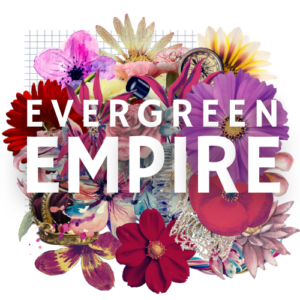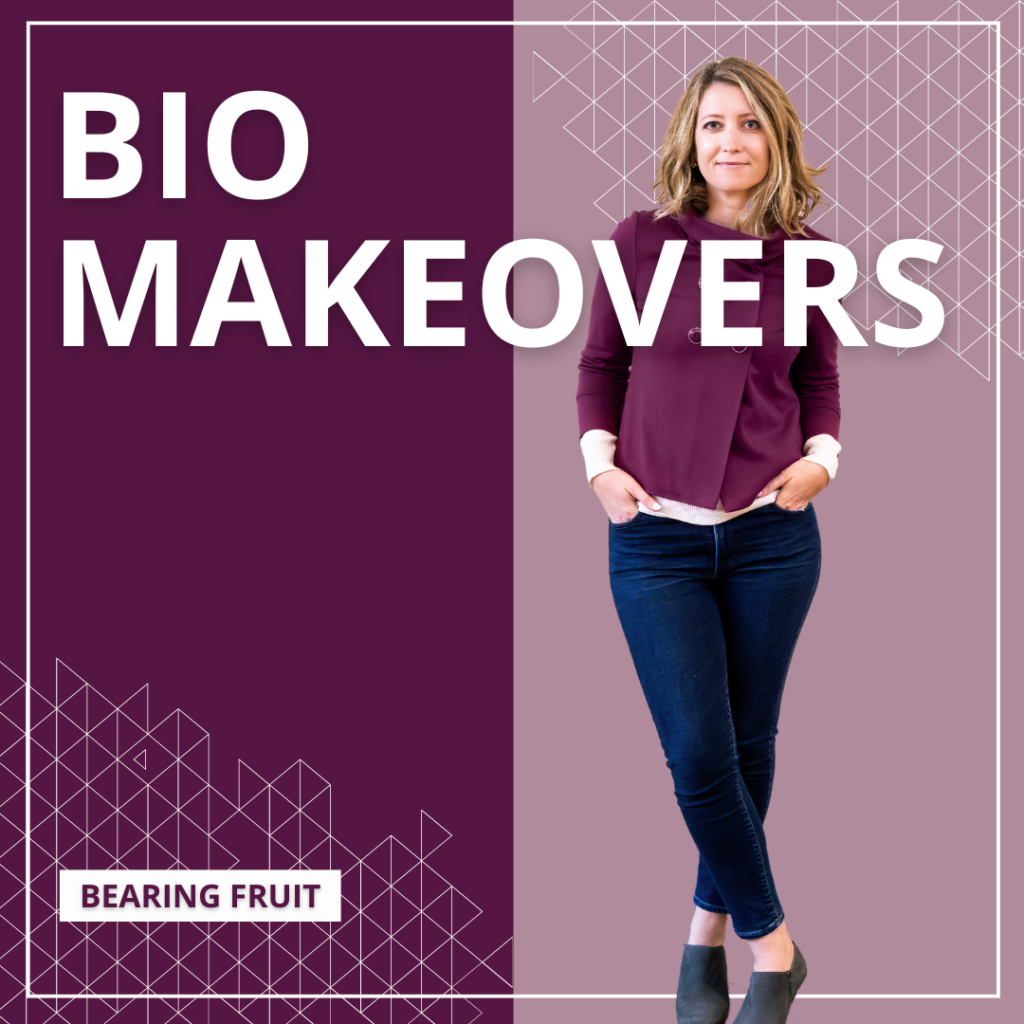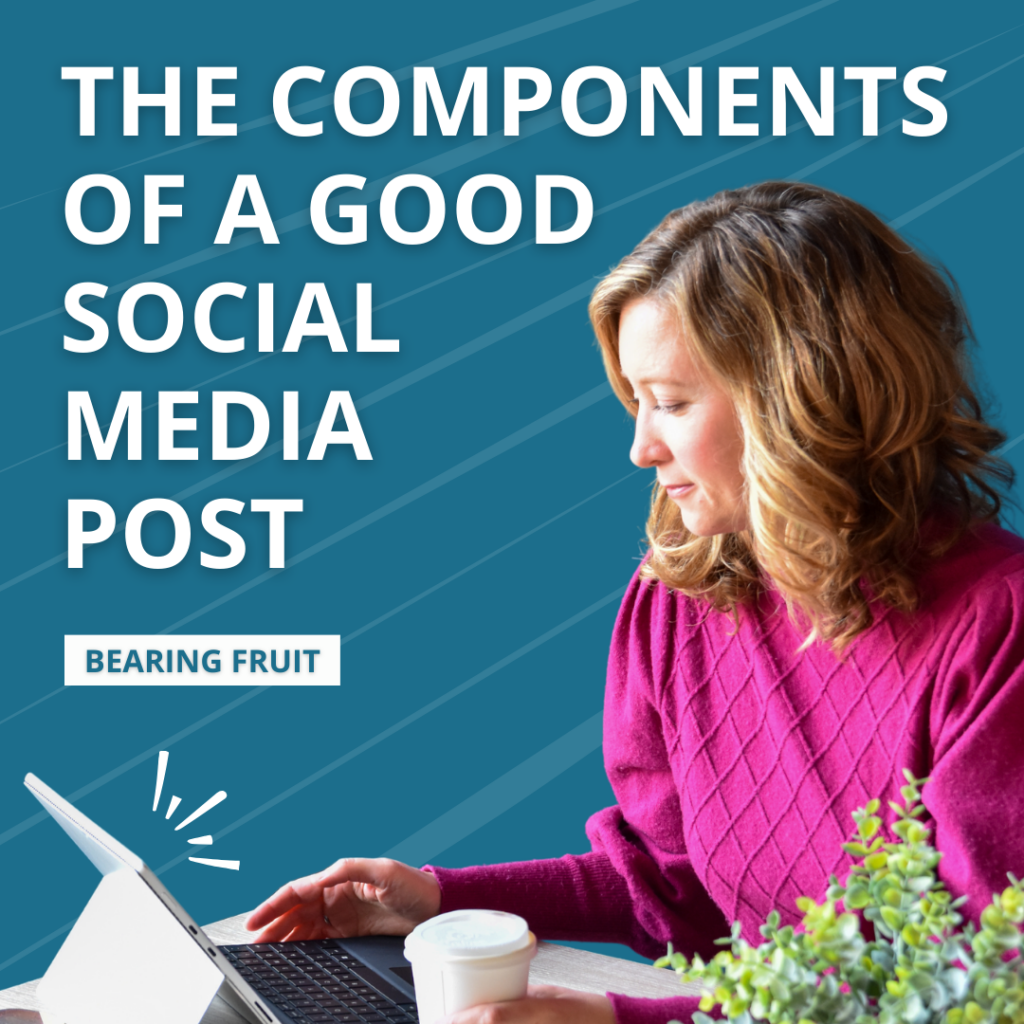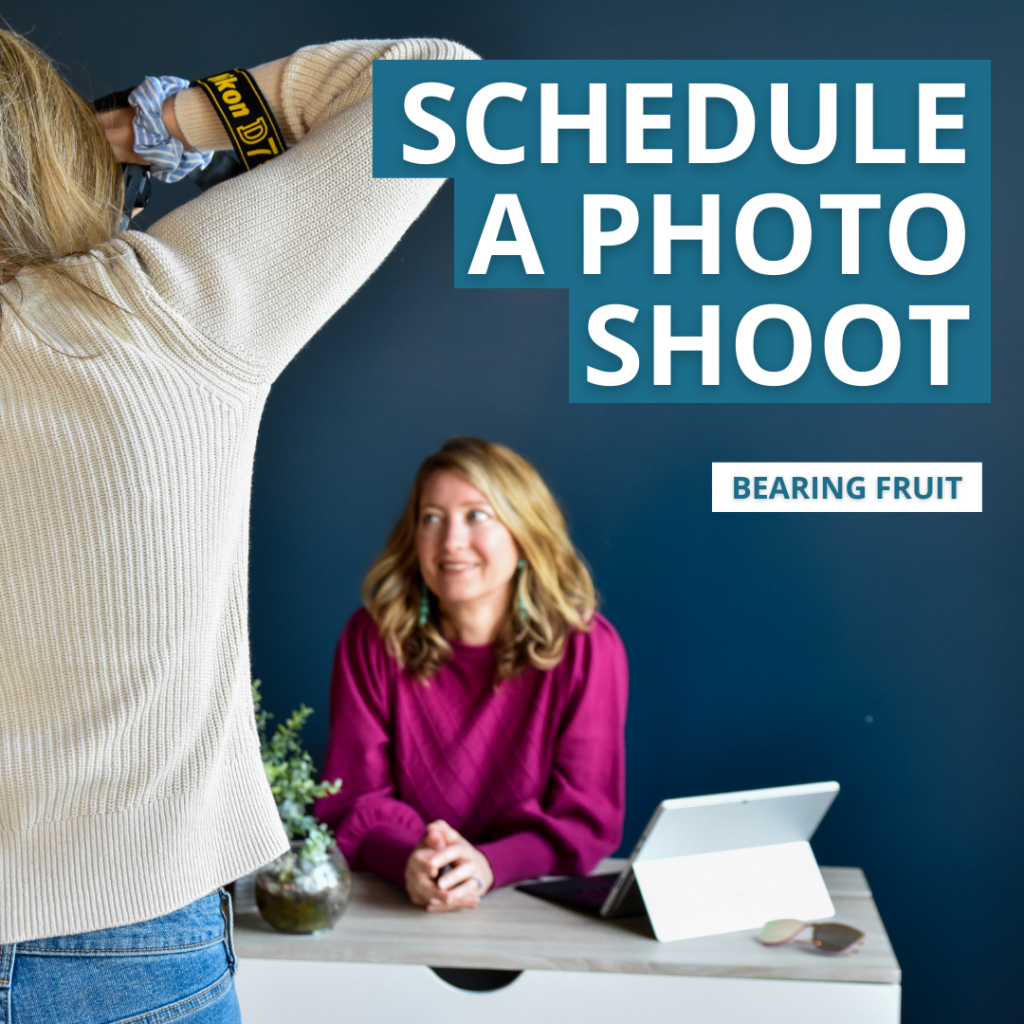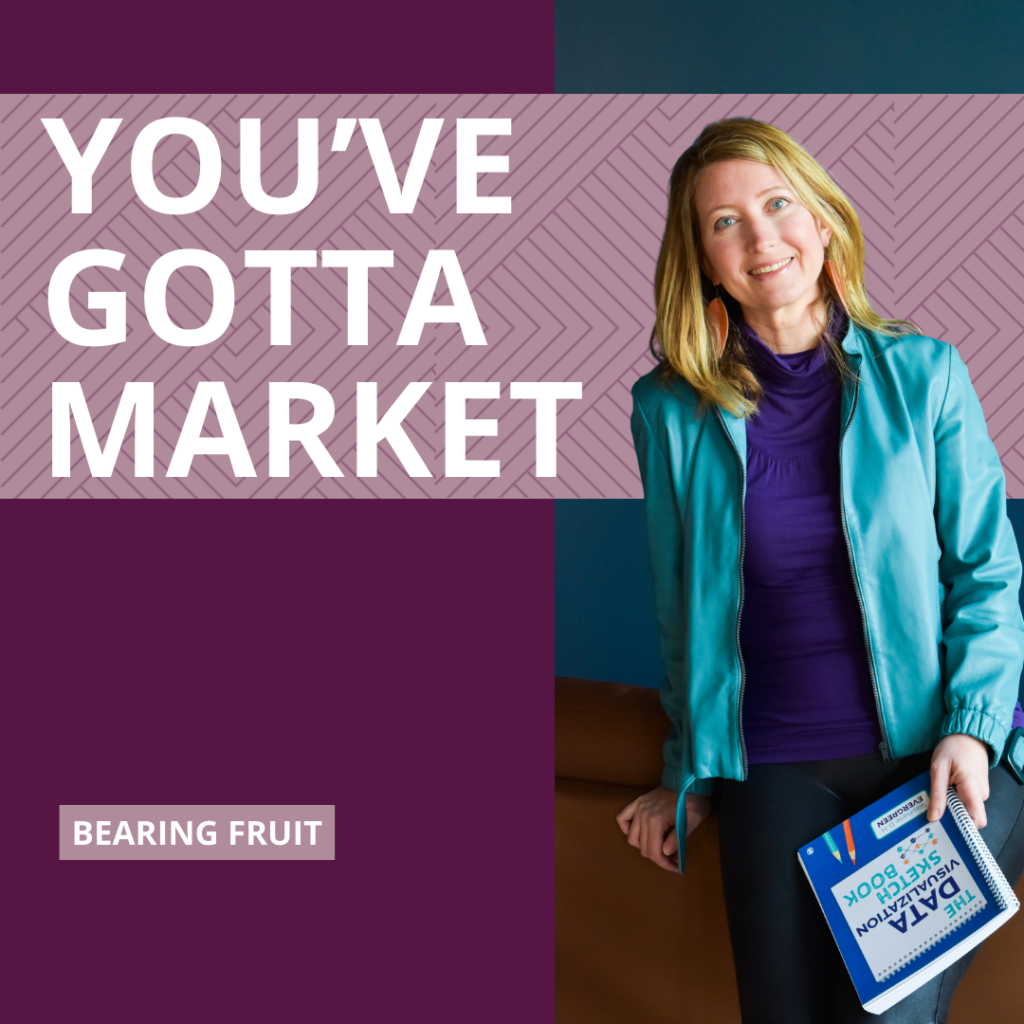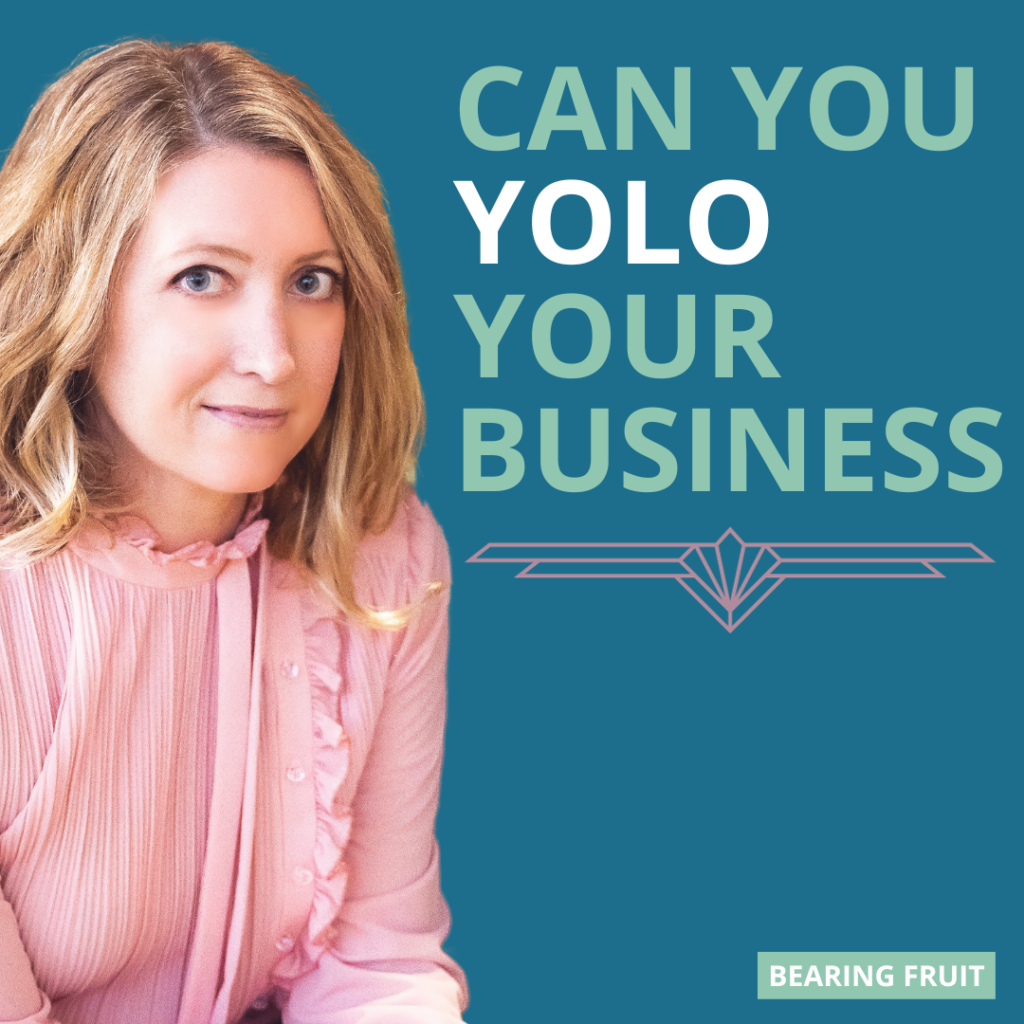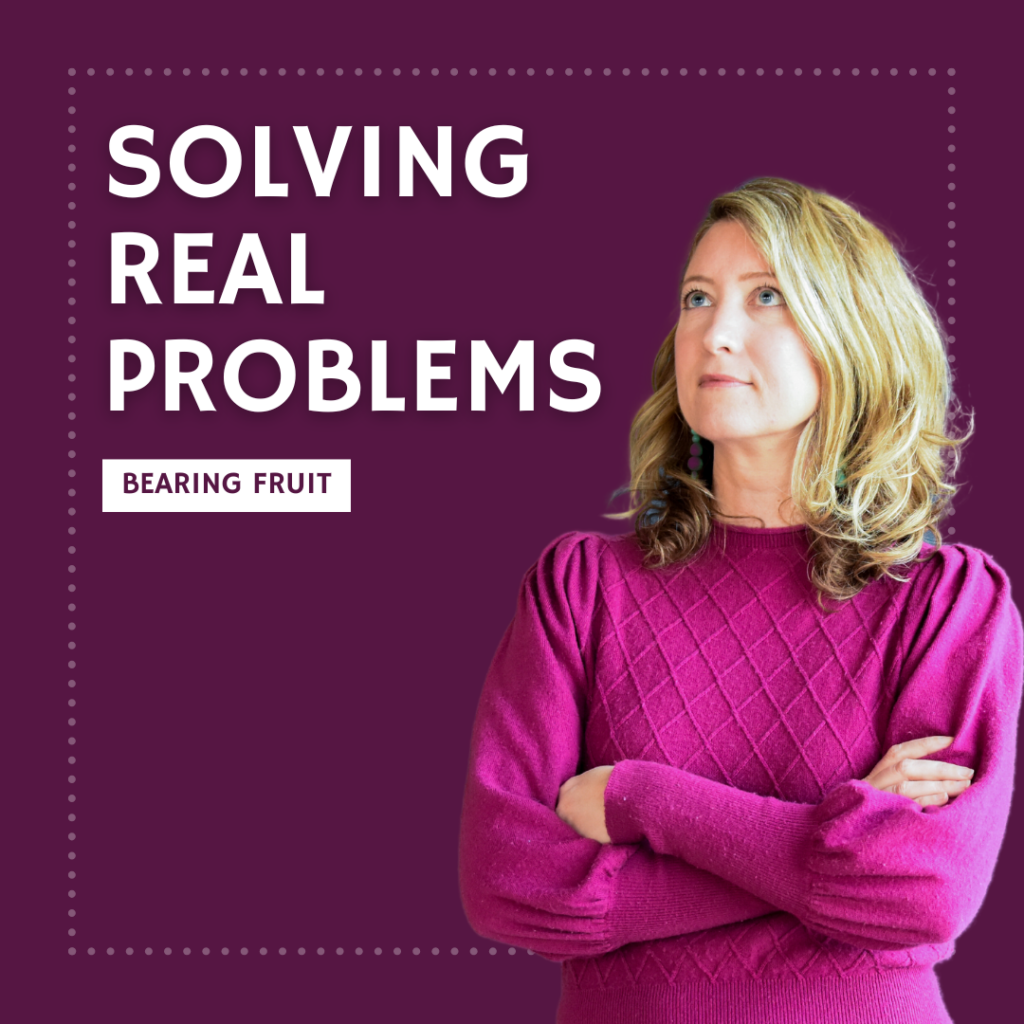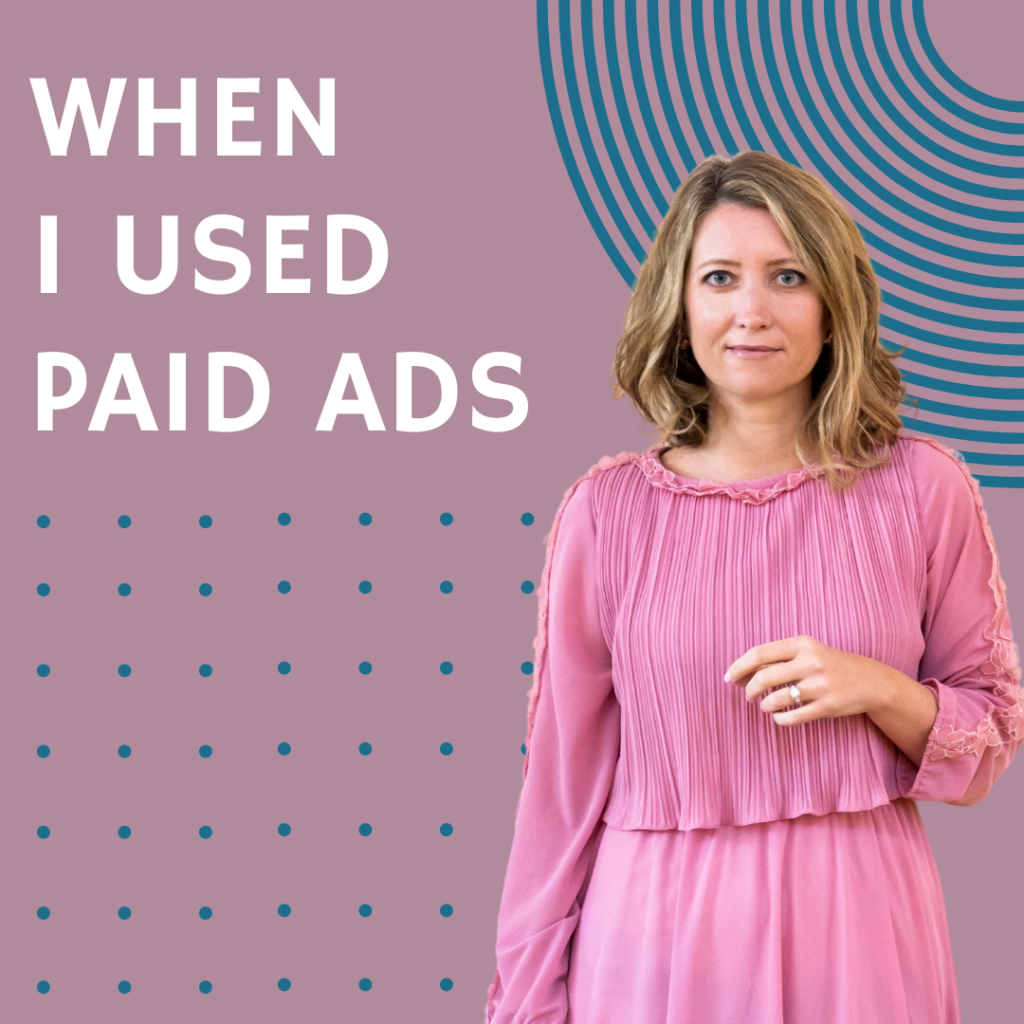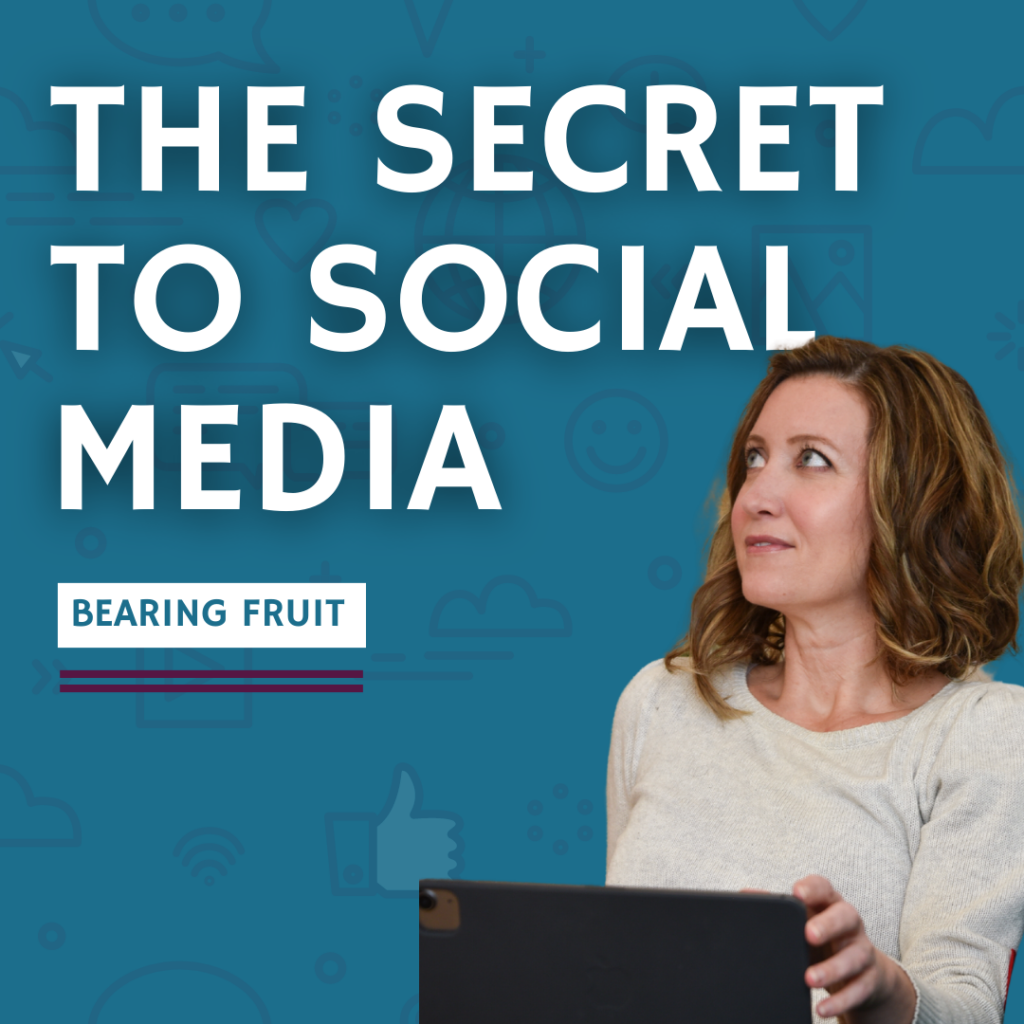Bio Makeovers
It’s so hard to write about yourself, isn’t it? As uncomfortable as it is to write a bio, it’s one of the first places people will go to see who the heck you are and what makes you credible.
We try to get around the awkwardness and bolster the credibility and bulk up the word count with formality. We add acronyms and list certifications. We jargon it up, like we’re putting on armor.
Except…
No one cares. Because all those letters and phrases aren’t relatable.
Formality creates distance between you and your next client. You know what they really wanna hear? That you understand them. That you’ve been in their situation and know how to help.
Let’s make over a couple bios so you can see how people get this wrong and what would work better.
Yoga Teacher
I googled “yoga teacher kalamazoo” and though I have changed the person’s name, this is the bio of the first person who came back in my search results:
BEGINNING OF BIO
Monique is a Registered Yoga Teacher with 500 hour certification trained by Marlene Stevens. Monique has practiced Yoga for over 20 years and has taught Yoga since 2008. She is a Licensed Massage Therapist and a certified Thai Massage and Bodywork Practitioner. Monique started her professional career as a Registered Nurse in France.
In addition to teaching her usual classes, Monique offers private yoga lessons and bodywork. For private lessons and bodywork, please call or write.
Let Monique unburden you with yoga and massage, and inspire your joie de vivre!
END OF BIO
You know who understands this bio? Monique. And other trained yoga teachers. Who are very obviously NOT Monique’s ideal client, since they don’t need her services.
The rest of us are out here like “Who’s Marlene Stevens? Is that supposed to impress me? Is 500 hours a lot? A little?”
Labels like “Thai Massage” and “Bodywork Practitioner” throw me off because I don’t know what the heck any of that means.
And then she ends the bio with a phrase that may be relevant to her and her French background but I can’t pronounce, even in my head.
None of this makes my heart leap with connection.
My rewrite:
BEGINNING OF BIO
Monique knows how the body strengthens and relaxes – she started out as a registered nurse. Her medical studies and curiosity about the human body led her to yoga, where she found a practice that stretched her weary muscles and centered her soul. Monique discovered a joy of life through yoga. So she formally trained for over 500 hours under a widely-recognized expert (link to the expert’s site) to become a teacher. On Tuesdays and Thursdays, you can drop into her classes and shine your heart.
END OF BIO
This isn’t perfect but it’s far more relatable. Without the jargon stopping you in your tracks, this rewrite keeps you reading all the way to the end. It tells you enough about her to trust that she knows what she’s doing, minus the alienating lingo.
Therapist
Same, I just googled “therapist kalamazoo” and picked the bio of the first person who showed up. Name changed.
BEGINNING OF BIO
I am a licensed professional counselor in the state of Michigan with over 15 years of experience in working with children, adolescents, adults, families, and individuals seeking support on a variety of levels and concerns. A few of my preferred theoretical approaches include Cognitive Behavioral Therapy and Solutions Based Counseling. I appreciate working with clients from a holistic perspective as well. I have found that tailoring a treatment plan to the specific needs and goals of each person is important for progress and growth.
I have experience working with clients in a range of areas including but not limited to anxiety, depression, transitional life challenges, family systems, and relational concepts.
END OF BIO
Do you see some of the same issues as the yoga teacher?
We’ve got some jargon in places that are actually super critical for a potential client. “My preferred theoretical approaches…” sounds very important! This is what would tell me whether we’d be a good match. But the end of that sentence has two capitalized phrases that only people who are already in the therapy world would know.
You’ve gotta write your bio for people who are brand new to this whole thing. Your audience is potential clients.
Also, let’s get specific. People relate to details. This therapist seems to work with… absolutely anyone. “On a variety of levels and concerns.” So…. basically anything. This is so generic and vanilla that there’s nothing to grasp on to.
My rewrite:
BEGINNING OF BIO
My very favorite part of being a therapist is seeing my clients catch that critical insight, when the thinking that’s been holding them back finally gets out of the way. Getting to that beautiful place is different for everyone, so I spend time with my patients, crafting a tailored therapeutic plan.
I’m not the kind of therapist that just listens to you talk and asks you how you feel. I partner with you to develop solutions to your life’s biggest obstacles.
I specialize in working with folks who have anxiety and depression, particularly related to life changes and family struggles. But you don’t have to pinpoint your problems before you meet with me. Let’s connect and figure it out together.
END OF BIO
Which one feels like the person who’s gonna really see you, understand you, and help you? One of these bios feels like a hug.
Quick aside: Yoga teacher used 3rd person and Therapist used 1st person. Which is the better way? Write a third person version if someone else is going to read your bio out loud (like introducing you before a talk). Use a first person version on your website.
Data Visualization Specialist
Easy to judge those in other industries, so let’s take one more spin through this, now focusing on data visualization. This is the real bio for a real data viz specialist, Bridget Cogley. She volunteered herself as part of my Boost & Bloom course.
BEGINNING OF BIO
Interpreter turned analyst, Bridget Cogley brings an interdisciplinary approach to data analytics. As Chief Visualization Officer at Versalytix, her role uplifts data visualization within the org and helps shape the vision. Her dynamic, engaging presentation style is paired with thought-provoking content, including ethics and data visualization linguistics. She has a deep interest in the nuances of communication, having been an American Sign Language Interpreter for nine years. She is currently a Tableau Hall of Fame Visionary. Her work incorporates human-centric dashboard design, an anthropological take on design, ethics, and language. She extensively covers speech analytics and open text. Prior to consulting, Bridget managed an analytics department, which included vetting and selecting Tableau, creating views in the database, and building comprehensive reporting. She also has experience in training, HR, managing, and sales support.
END OF BIO
Now, if you know something about the field of data visualization, much of this bio makes sense to you. But then again, if you already know something about the field of data visualization, you aren’t likely to need to use Bridget’s services.
We gotta go Beginner Mind here, my friends.
My rewrite:
BEGINNING OF BIO
Bridget Cogley deeply understands the nuances of communication. She’s the Chief Visualization Officer at Versalytix, where she leads data development to help clients see insights and take action. Bridget used to manage an analytics department, so she knows what data-informed decision-making can do for a company. Clients love her human-centered approach and how she integrates ethics with design.
Bridget’s communication skills extend to the stage – she’s a frequent keynote and trainer. She’s been awarded as a Hall of Fame Visionary at Tableau (a data visualization software company) for her efforts to teach clear data communication. And she’s been an American Sign Language interpreter for nine years.
END OF BIO
I stripped out some of the jargon. I clarified how Bridget’s experience connects to the audience. And I introduced activities Bridget would like to do even more, like train and keynote.
Do you see the differences? Do you FEEL the differences? Write a bio that exudes confidence and relatability – that’s how you build credibility.
PS If you’re curious about my bio, you can see one here and one here.
The Components of a Good Social Media Post
Friends, the algorithms are always changing. But as sure as the sun rises tomorrow, the algorithms always prioritize and promote posts that are structured a certain way. I’ll tell you what’s working in Spring 2024 – no guarantees this will last forever.
The other guarantee: This won’t make you viral. But it will work to get engagement and engagement is where you build your brand.
Good, solid, business-based social posts have 3 things:
Pictures
These days the platforms value pictures posted as (1) videos or (2) a swipe-able carousel of several static images.
A point
Add text please! This isn’t like the olden days of Instagram where you literally just post a photo.
A call to action
Ask your followers to do something. If you’re being business-savvy, you’ll use this as an opportunity to get them to use your services in some way.
Let’s look at a few examples of successful static posts!
Nina’s Social Media Post
Check out this LinkedIn post from my friend Nina Sabarre. She runs Intention 2 Impact.

Nina’s post includes a swipeable set of images, including this cover image, that capture her 5 hot takes from a recent conference.
Each hot take is, of course, the point of the post.
And her call to action is to invite engagement by asking followers to reply with their memorable moments from the conference.
Nina also made the smart move of tagging several others to bring this post to their attention. 5 reposts – that’s pretty good. 47 likes – cool! This is a really solid post.
Nicole’s Social Media Post
Here’s another example, this time an Instagram post from a former mentee, Nicole Rankins.
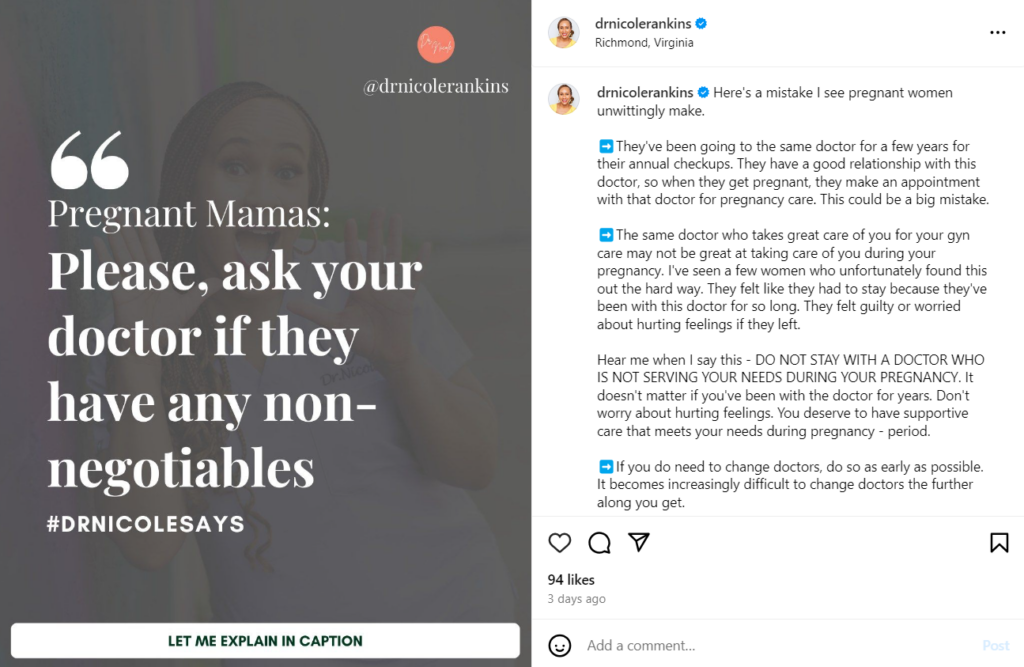
Instagram can be so image-forward that people sometimes don’t even read the accompanying text. So Nicole’s image includes a note to see more in the captions.
The first line of her caption – which is all most will see until they tap See More – is a nice hook that makes you want to keep reading. Her caption is full of points. Real insights and help.
Her caption is so long you can’t even see the call to action in this one screenshot. It is:
“And if you’re looking for questions to help you decide if you’re with the right doctor, check out my FREE class on how to make your birth plan. Head to my profile to grab it now!”
She’s giving her followers next steps to take that get even more practical useful advice from her. 94 likes – awesome! When the call to action guides followers out of the post, you can bet the like count is inaccurate because rather than tapping the heart, people are tapping into Nicole’s bio and taking the action.
You can sub out the graphics for a video, too. Just you talking to the camera. It takes less time in Canva and a wee bit more courage. Even if you have video, you’d still want a caption with a point and a call to action.
This info changes day-to-day but at the time I’m writing this post (early Spring 2024) the data is saying that the best engagement comes from captions that are 30 words or less.
If you’re worried how your new social media posts will be received, send me the link to your post and I promise, I’ll drop a comment and a heart.
Schedule a Photo Shoot
That blurry shot of you, clearly out with your friends but their faces are cropped out? Not gonna cut it. You need to schedule a photo shoot.
I underestimated how much I’d need photos until I got my first batch. Now I have a photo shoot annually.
You’ll use these shots to professionalize your website and seriously up your branding. Check out my IG grid to see what I mean. Notice how my actual face (and often my glam shoes) are in many of my posts.
My social media consultant has run the numbers on my posts (across all my platforms) and the posts with my actual face always get the most likes and engagement.
Oh, you HATE taking photos? So does everyone, Honey. Same way we hate listening to our own voice. Get over it and call a friend with a good camera.
A Photo Shoot Plan
The goal here is to get as many unique-ish photos as possible out of one appointment.
Which means you’ll need to:
1. Find a location with a variety of backdrops. Don’t take all of your photos in front of the same tree. Your photographer may have some good ideas for you. We found local spaces specifically designed for photo shoots, with plants, couches, a bed (!), a desk, and great lighting, that we could rent hourly (makes the bed even more questionable).
2. Plan for at least three outfit changes. Be sure your clothes are all in the same color family so you can make anything on your lower half match anything on your upper half. Then a quick switch of one half gets you a new outfit. Bring jackets for another quick change.
Don’t forget your underwear. True story: I needed my nude padded bra (don’t judge) but forgot it at home. I was wearing a super flattening black sports bra that you can see through some of the light-colored shirts I’d packed for that shoot.
3. Bring props and accessories. Glasses. Earrings. Your laptop. Anything with your logo on it, like a coffee mug. The combinations of these first three points will get you a ton of unique-ish photos.
I’ll also add: Bring your hair tools. And take time to restyle whenever you want. In one of my early photo shoots, I felt so rushed (people pleaser trying not to waste the photographer’s time) that I was racing through outfit changes at the expense of my hair.
4. Provide some inspo for your photographer. I sent my photographer examples of exactly what I was looking for.
This:

Became this:

This:
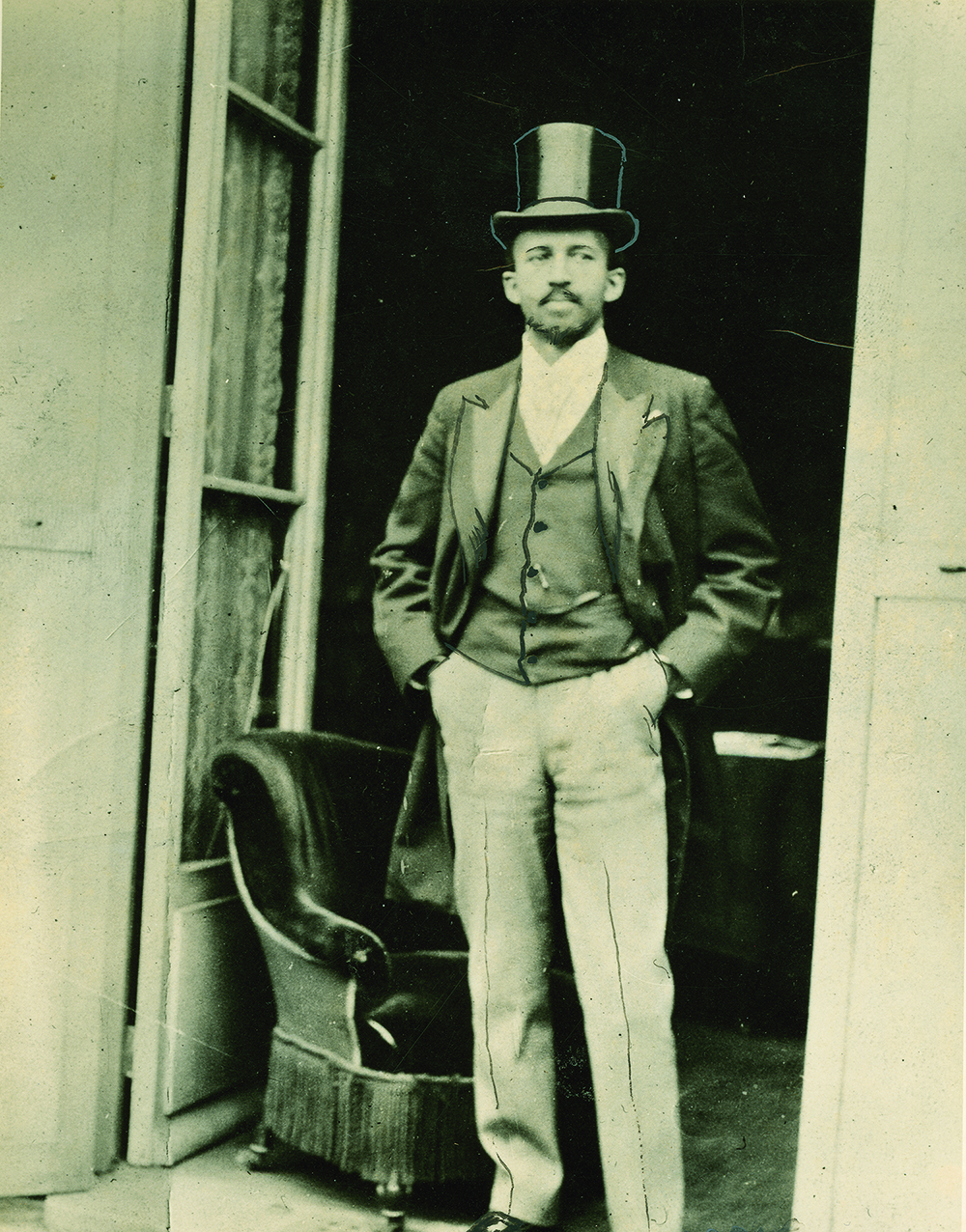
Inspired this:
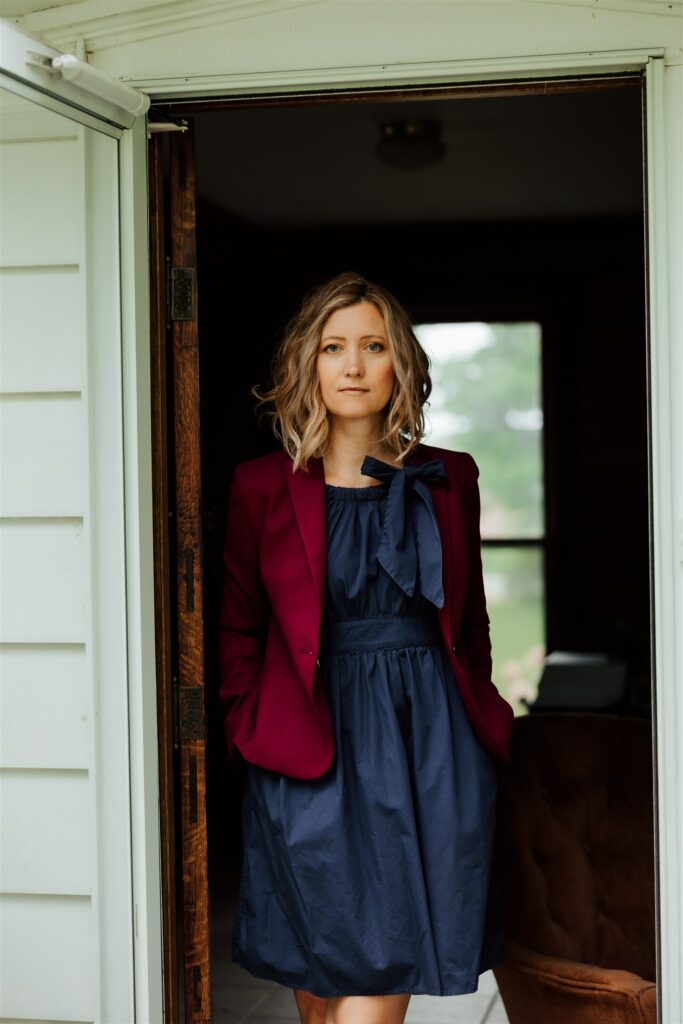
Just search on some of your favorite people (famous, semi-famous, whatever) and paste ideas into Pinterest or even a Google Doc.
5. Ask for portrait and landscape. Landscape works great on your website but portrait is usually better for social media.
6. Get your head in the right space. I wouldn’t have believed how much mindset could make a difference until I saw it in myself, in two photo shoots just a few months apart.
At the photo shoot below, I was relaxed. We had good tunes blasting. There was a cat running around. More broadly, work was good, my family life was happy. It shows:
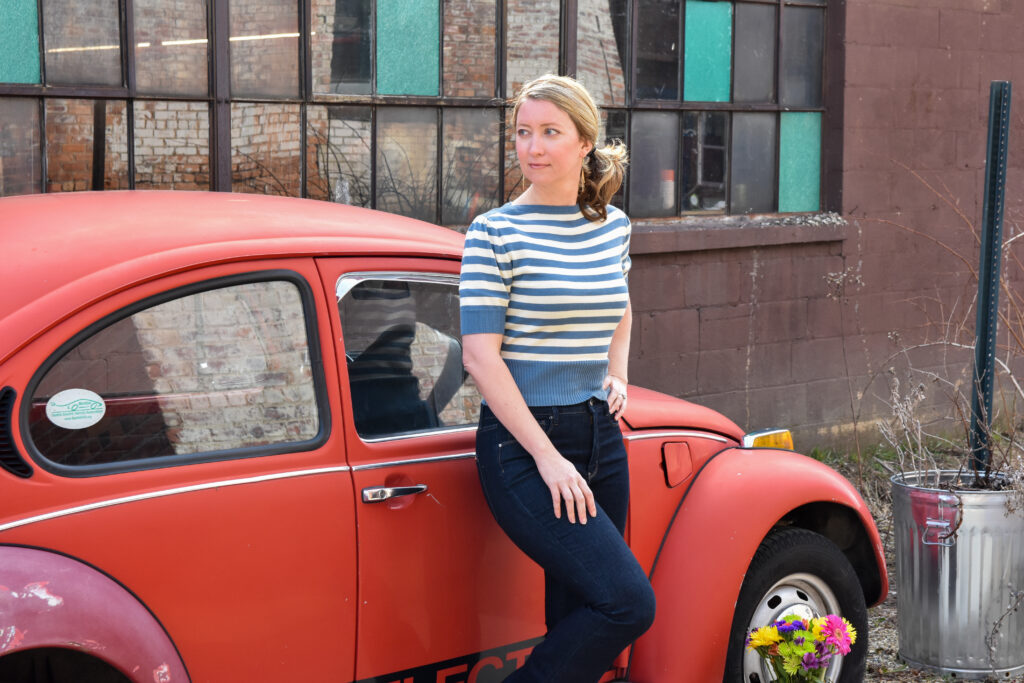
At the photo shoot below, I was incredibly rushed. I had just arrived at the location after a 4-hour stressful drive, which included a fight with my partner. I only had 20 minutes to network and take photos before heading to my next event. I was tense. Broadly speaking, it was just a few weeks before my divorce.
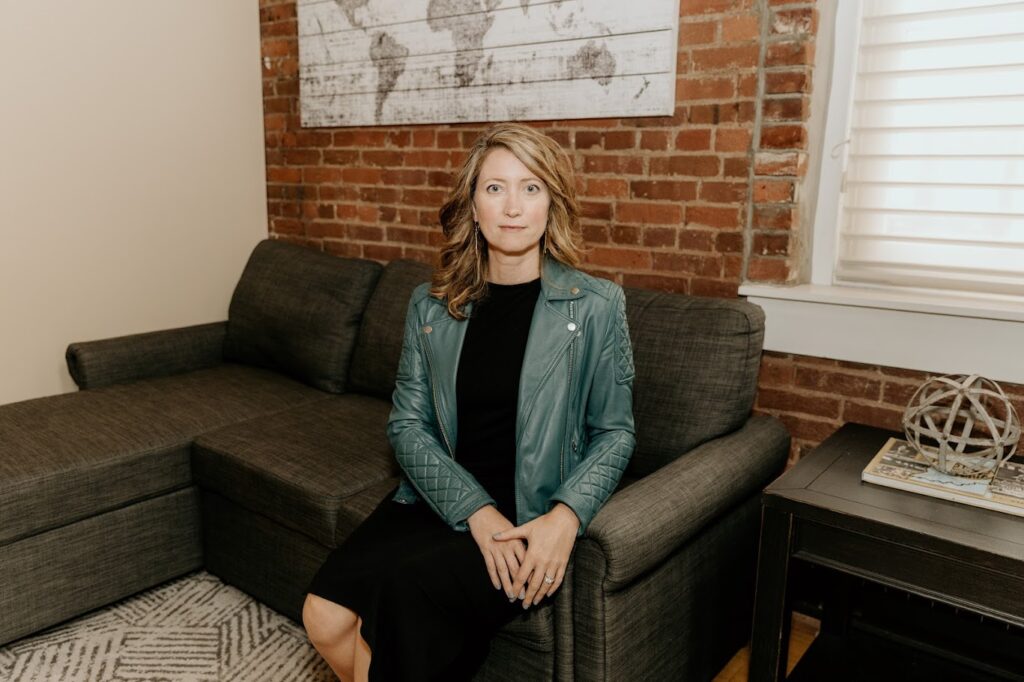
I was in a totally different headspace and it shows. (Though my jacket is still effin amazing.)
You can’t control all the variables in your life but you can prepare as much as possible to be in a good headspace leading up to your photo shoot. Make a playlist. Bring a buddy. Put joy in your heart.
Do you have a favorite headshot? I’d love to see it!
Shoulders back,
Stephanie
You’ve Gotta Market
Wouldn’t it be cool if finding clients worked more like Instagram?
Here’s what I mean: The “chandelier” in my dining room came with the house. It looks… well let’s just say “historic” which has been fine because the house is also historic but my god it’s pretty ugly. So one day I google “chandelier” and I saw dozens of pages of mediocre results.
And then you know what happened. I opened Instagram where every third post was an advertisement for a funky chandelier.
Of course I bought one. Of course.
Marketing works.
Marketing is how people who need you will find you.
Though it might seem like Brooklin Nash is referring to a perpetual problem, you, the freelancer, aren’t helpless in this situation.
You just need to market.
That can sound scary. Flippant, even. You “just” need to market like you “just” need to grow wings and fly to the next Beyoncé concert.
I swear, it’s much easier than you think.
Marketing doesn’t necessarily mean you’re running ads on Instagram, which can feel Big Time. (Though, honestly, I’ve been doing this for years during my Academy launches and it’s much less expensive and intimidating than I had expected.)
At the core, marketing is just telling people what you can do for them. Describe how you help solve their problems. Use examples from happy clients.
Good marketing, if you ask me, starts by building relationships with people long before they’re actually ready to cut you a check.
My favorite way to build relationships is through teaching what I know.
That’s how I show people how I can help them.
Wait, aren’t I just teaching them how to do the thing I want them to pay me for? Yeah, kinda.
Let’s take a really concrete example: This newsletter. It’s a relationship-builder teaching tool first (that’s why I ask you to write back to me and, when you do, I reply). It’s a marketing channel second.
This particular issue is about one aspect of marketing: framing the way you look at it to be less intimidating and more of a necessity to take you from where you are right now to where you can have your choice of clients.
But this isn’t everything I know about marketing, of course. I’m not giving away all my intellectual property for free. I’ve broken out a chunk.
A chunk that’s useful enough for you to actually benefit in your real life. And in the process, trust me and my guidance that much more.
So that when Boost & Bloom opens for enrollment, my readers are in a better position to want to enroll.
See how this works?
We got pretty meta there. Let me bring this back.
I use teaching as my main marketing tool because I like feeling helpful rather than creepy. The trick is to figure out which teaching method is the right one for you and your prospective clients.
Any method you choose for your teaching-as-marketing will be your vehicle for announcing your services to the world. It’s how people will find you. The trick is just to put yourself out there.
Hit Publish,
Stephanie
YOLO
At Stamped Robin – my all time favorite bar in Kalamazoo – you can order a YOLO.
Yes, it stands for You Only Live Once.
So, what is a YOLO?
It’s an $8 (yes, correct, no typo just eight bucks) glass of wine filled all the way to the very tip top of the glass. We’re talking an Instagrammable moment of surface tension.

The bartenders are talented – Unlike the drama in this photo, I’ve never seen a spilled drop.
The hitch is that you can only pick the category: white, red, rose, or bubbles.
Now you can trust that this won’t be a glass of dirt. It IS Stamped Robin, after all.
But YOLOs certainly attract people who are up for anything. Or at least have a tiny budget.
YOLO has real appeal for the right customer.
But what’s the benefit for Stamped Robin?
YOLO gives the bar a way to dispense of the about-to-go-stale bottles. The ones they’ve discontinued on the main menu. Those times when they took a chance on a new variety but didn’t love it enough to order more. Their castaways.
Where most bars would toss the bottle (ok, let the staff drink and then toss the bottle) and write it off as an expense, Stamped Robin makes a bit of cash and delights entire tables when everyone whips out their phones to record the easy-to-please friend who ordered the YOLO. It makes Stamped Robin more memorable. It becomes a part of their brand.
Did you catch that? They took what could have been trash and turned it into their brand.
Freakin genius.
Ok, so, what can you YOLO?
What thing did you create that didn’t end up getting much mileage – that you could now give a second life?
That quick video you recorded for a client. Can it now become a demo on your website?
That proposal that got rejected. Could it resurrect as a blog post?
The free talk you did because a friend asked – make it a mini workshop?
I bet if you review your experiences and opportunities over the past two years, you’ll identify a bunch of material that still has life left, perhaps in another format. Use it. You’ve already done the hard work to create it in the first place. Now it’s just a matter of repackaging.
You can also use a YOLO mindset when you’re staring down a part of a project that you KNOW isn’t going to get a wide audience. Personally, it’s super hard to get motivated to develop that content.
But if I have a plan to double dip and recycle the content elsewhere, I pat myself on the back for being a maximizer and get to work.
Are you getting any ideas? Run your YOLO plan by me and let’s make this happen.
Solving Real Problems
Laptops were supposed to be a symbol of freedom from the chains of the desktop computer. It was sold like You can work anywhere!
But it ended up being more like: You can work. Anywhere.
Ash Ambridge has been talking about how tech was supposed to save us but it actually only made it possible for us to work even more. Crap.
That pace increased even more when we all went work-from-home. In that time, according to one source, the work day increased 2.5 hours.
NO THANKS!
Enter Heineken.
Yes, Heineken.
The beer company that was a central feature of your undergrad days.

Friends.
I haven’t had a Heineken since 2004 but I kinda want one now.
Because this is genius.
This marketing campaign hits the Surprise and Delight buttons for consumers.
And it solves a real world problem.
The bottle opener isn’t even their main product. Nor will it ever be. They only produced a limited number and, sorry, your window of opportunity is over for now.
But it was an ancillary product that led people to their main seller.
The bottle opener is a tool that lets the beer drinker become the marketer. You know someone is taking that to the next party, with a case of Heines, and showing everyone how it works.
Think about this the next time you’re looking for a thank you gift for clients, some conference swag, or a small product to add to your ladder. No one needs another totebag.
What could you do instead that aligns with your brand, solves a real problem, and makes people smile?
We usually think of marketing as paid ads or social media posts but – especially because everyone else is zigging digital – when you zag physical, you corner the attention.
When I Used Paid Ads
For the very longest time, I thought paid ads were for people who hate money. Business is good, I thought, I don’t need to PAY people to get me more clients.
But.
I’m a data nerd. I love to run an experiment and see what happens.
So now here we are, on the other side of a lengthy ad campaign, analyzing the results.
Up to this point, my main marketing strategy has been organic. Meaning, if people find me, it’s through something I made on my own, like a blog post, a YouTube video, or even word of mouth.
Organic marketing is a PUSH.
You push your content out there and hope to the heavens that (step 1) it’ll land with the right people and (step 2) they’ll want more from you.
Paid advertising is a PULL.
You identify your target audience and put your ads right in their faces, actively pulling them into your orbit.
Like Paula Abdul and MC Skat Kat, these two opposite forces can work magic together.
If you take a strategic approach.
While there’s no one right way to market, Liz at LLY Communications is a genius at figuring out a strategy specific to each client that produces the biggest bang for your buck.
Early on in our work together we noticed something huge:
When we posted ads for one of my online courses, it didn’t get much engagement. Few people clicked, fewer people signed up. Each signup, therefore, was pricey.
When we switched the ad strategy to focus on something free, like one of my blog posts, engagement went up. A lot.
Which makes our ad strategy relatively inexpensive, but puts more emphasis on that potential client’s post-ad-click journey.
This means (for us, anyway, at this particular moment in time) the real work comes in taking people from reading a free blog post to enrolling an online course. Seems like a situation with high creep factor. Shall we blast a pop up over the blog post? Ew, so annoying.
Strong organic content is the magnet that keeps people in my orbit.
Paid ads are like your billboard and organic content is like your famous brick chicken recipe that keeps everyone coming back.
Liz could tell my organic content was strong because of:
- The size of my clean email list
- The open rates for my emails
- How many of yall write me back (this is my favorite part)
- Website hits on my blog posts
- The sheer number of blog posts I’ve written over time
Do you see indicators in that list that reflect both quantity and quality? That’s a strong organic content game, Honey.
Once I had pulled people into my orbit through the ad, I was able to keep them there, exploring my website, reading other organic content, signing up for my newsletter, getting curious about my online courses.
Companies who don’t have strong organic content have to sink a ton more in paid advertising because they need to get way more eyeballs since they’ll convert a far smaller percent into actual customers due to no magnet. Make sense?
I can really only speak for my own experience here (though this likely applies to you, too): Investing the time and energy into organic content is critical.
Hold that free class.
Start that newsletter.
Fire up that podcast mic.
Launch that YouTube channel.
PUSH.
It takes a while to build up the breadth and depth of organic content that acts as your track record of being stunningly helpful. This is absolutely about playing the long game.
One day, when you’re ready to PULL, you’ll have magnets in place that prove to your potential customers that you’re not just some flashy wannabe influencer. Your concrete organic examples will show your value and make people wanna stick around. That’s how people will know you’re the real deal.
The Secret to Social Media
Actually, this is the secret to pretty much anything.
Show up. Consistently.
That’s it.
Whew!
The secret isn’t to write 365 homerun tweets that go viral. No one can do that. It’s a bar set too high – so high it’ll intimidate you into never ever hitting Send.
Accept the fact that much of it will be meh.
Like any bell curve, most of your posts are going to be perfectly fine. Some will suck. Occasionally, you’ll knock it out of the park.
Some days I write posts that get hundreds of interactions.
Some days I clearly missed the mark.
Most of the time, my posts are somewhere in the middle. Good, not viral.
By the way, that popular post and that least popular post took about the same amount of time to write. I’ve seen zero relationship between the time you take to develop your social media content and how much it resonates with your audience.
So don’t overthink it. Don’t be a perfectionist about it. Just show up, consistently.
While you’re there, respond to some other folks. That way, you’re showing up in their comments, not solely expecting them to come to yours. Spend 10 minutes on this.
Then get off. Cause too much social media is bad for your mental health.
Same thing for newsletters.
Be there on a consistent basis.
In fact, Steph Smith wrote a reassuring article about how greatness is really just being good, repeatedly.
Consistency is the hard part because it’s soooooo easy to give up when your new podcast only gets 6 downloads. It’s much more difficult to trust the process for a little longer and keep editing future episodes.
Here’s what I mean:
Say you were to visit my data visualization blog and see that my last post was June 2022. And the one before that was from 2021. At your most gracious, you might think “Wow she’s got so much work she can’t even dedicate time to her blog.” But on a typical day, you’d likely conclude that I just gave up on my little side project.
It would be a signal that I couldn’t see something through (like, not only did I give up on the blog but I also didn’t bother to remove the withering thing from my site, like some skeletal succulent abandoned in a windowsill).
But if you come to my blog and see I’m consistently sharing good ideas every two weeks, you begin to see me as a reliable resource. Someone who can be trusted.
Trust builds connections. And connections get you contracts.
Showing up consistently keeps you top of mind. So when your boss says “hey I think it’s time we get some data visualization training” I’ll be the person you think of because I’ve shown up in your inbox with good ideas every two weeks for years.
Yep, it’s a long game.
But you can’t show up consistently everywhere, all the time. You can’t be running 100 different long games. That’s a burnout maker.
Which means you have to be choosy about where you want to put your energy. Pick one direction. Put it in your calendar. And go.
What have you chosen? Where are you showing up consistently and playing the long game? Send me a link so I can ride shotgun.
